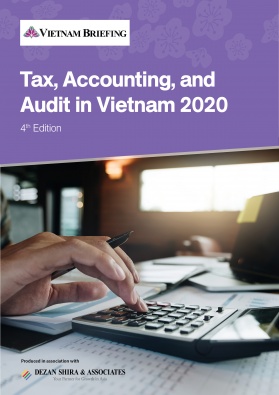Vietnam’s Electronics Industry: A Guide to Emerging Opportunities
Vietnam’s booming electronics industry (EI), led by multinational corporations, has played a vital role in spurring trade volume, and bolstering the country’s GDP in the past decade. Fueled by trade liberalization, corporate tax cuts, improved labor quality, and government reforms, Vietnam consistently attracts foreign investors eyeing Asia for relocating their electronics industry investments.
Vietnam’s electronics industry (EI) is pivotal to its rapid economic growth and manufacturing achievements.
Supported by trade agreements and government policies, this sector offers attractive investment opportunities.
To capitalize on these opportunities, a thorough grasp of recent developments in Vietnamese electronics production, the sector’s structure, and current prospects is essential.
Vietnamese electronics production
Amidst US-China tensions and increased manufacturing costs in China, Vietnam has benefited greatly—expanding its role in regional and global value chains.
Vietnam has climbed the ranks as a key electronics exporter, from a modest 47th place in 2001 to 12th place in 2019. The country has, in particular, recorded success in the telecommunications segment. In 2022, it exported mobile phones to the tune of US$57.9 billion.
Top 10 export markets for mobile phones made in Vietnam, 2022
| Destination | Value US$ |
| China | 16,260,090,542 |
| United States of America | 11,878,221,499 |
| Korea (Republic) | 5,048,067,884 |
| United Arab Emirates | 2,210,518,699 |
| Hong Kong | 2,052,472,147 |
| Austria | 1,805,299,006 |
| India | 1,522,199,493 |
| Germany | 1,159,830,806 |
| United Kingdom | 1,137,499,421 |
| Thailand | 1,007,541,745 |
Source: General Department of Customs
While Vietnam’s EI imports nearly doubled from 2015 to 2022, its exports have consistently grown—rising from US$47.3 billion in 2015 to US$114.4 billion in 2022.
In 2022, Vietnam’s electronics exports amounted to 30 percent of the country’s total exports.
Vietnam electronics industry exports
Vietnam exports of computers, electrical products, spare parts, and components reached US$55.54 billion in 2022.
The top export destinations were China, the US, and South Korea. The key electronics exports are mobile phones, TVs, cameras, and electronic integrated circuits.
The electronics industry accounts for about 17.8 percent of Vietnam’s manufacturing industry, according to data from the General Office of Statistics.
Top 10 export markets for electronics made in Vietnam, 2022
| Destination | Value US$ |
| United States of America | 15,940,009,854 |
| China | 11,884,743,601 |
| Hong Kong | 5,875,057,749 |
| Korea (Republic) | 3,384,050,801 |
| Netherlands | 2,496,678,843 |
| Malaysia | 1,153,020,456 |
| Japan | 1,143,148,558 |
| Taiwan | 1,117,642,372 |
| Poland | 1,115,015,369 |
| Mexico | 1,084,531,916 |
Source: General Department of Customs
Foreign investment in Vietnamese electronics production
The electronics industry in Vietnam is mainly dominated by foreign companies, particularly multinationals. Although the number of foreign-invested enterprises (FIEs) is only one-third of the total EI enterprises, their export share accounted for just under 90 percent of total electronics exports in 2019. This grew to 96.8 percent in 2020 and 97.8 percent in 2022.
A number of major electronics firms have relocated at least part of their supply chain to Vietnam in recent years. Notably, LG’s smartphone production has moved entirely from South Korea to Hai Phong. Apple has moved part of the production of its AirPods, while Nintendo has also transferred a part of its Switch Lite game console to Vietnam. Furthermore, key Apple supplier Foxconn was approved earlier this year to invest in two new facilities in Vietnam to the tune of US$246 million.
Emerging electronics investment opportunities
Trade liberalization
Companies looking to invest in Vietnam can take advantage of the country’s network of FTAs, with many agreements signed through its membership in the Association of Southeast Asian Nations (ASEAN).
In 2018, the average import tariff for consumer goods in the EU was 8.9 percent for non-EU countries without any trade agreements. Under the recently ratified EU-Vietnam Free Trade Agreement (EVFTA), the vast majority of these tariffs will be eliminated.
While these lower tariffs offer a tempting way to reduce export costs, it is crucial to be aware of the rules of origin guidelines in each FTA. Due to the underdevelopment of supporting industries in Vietnam, EI production is very import-dependent, with domestic firms struggling to assimilate into global value chains.
Tax incentives
Not only can investors take advantage of reduced tariffs, but the Vietnamese government also provides corporate income tax (CIT) breaks for companies working in the high-tech sector as well as in high-tech zones, specific industrial zones, and underdeveloped socio-economic regions.
Since January 2016, two preferential rates of 10 percent and 17 percent for 15 years and 10 years, respectively, have been available for new foreign-invested firms manufacturing high-tech goods in Vietnam. Preferential tax rates can be extended for up to 15 years if the project’s manufactured goods have “international competitiveness”.
Investors may also be eligible for additional tax holidays when they first invest:
- Four-year tax exemption and a nine-year 50 percent reduction for those qualifying for the 10 percent CIT rate;
- Four-year tax exemption and five-year 50 percent reduction for those operating in certain areas; and
- Two-year tax exemption and four-year 50 percent reduction for operating in certain areas or in some industrial zones.
For R&D projects, 10 percent of annual profits can be placed into a tax-deductible fund before tax is levied.
Government reforms
Electronics, information, and telecommunication technologies are among the top 10 priority sectors approved by the Vietnamese government for the industrial development strategy period 2025-2035.
Foreign investors are also encouraged to operate in designated EI clusters and industrial zones, where they are already equipped with the necessary infrastructure and facilities. As a bonus, the operation may qualify for CIT breaks, as mentioned above.
Favorable demographic structure
According to a study by the United Nations Fund for Population Activities (UNFPA), Vietnam will be in a “golden population” age, from 2010 to 2040, whereby the number of working-age Vietnamese will outweigh the number of dependents. Additionally, the minimum wage in Vietnam is between US$140 and US$202 depending on the region. This is relatively low compared to other manufacturing hubs in the region.
In terms of labor quality, Vietnamese engineers working in EI have fairly high qualifications compared to their colleagues in the region. According to Samsung Vietnam, 10 percent of Samsung’s software globally is developed by Vietnamese IT engineers—Samsung has two of its largest R&D Centers in Hanoi and Ho Chi Minh City.
However, there are shortcomings in junior staff training and the quality of graduates of educational organizations. The World Bank’s STEP Skills Measurement Program survey reported that two-thirds of all international firms in Vietnam complained that both the general and vocational education systems did not meet the skill needs of their workplace.
Planning an effective market entry
Given the rapid growth of electronics production, trade, and investment seen in recent years, the time has never been better to make use of Vietnam as a cost-effective center for larger Asian operations or as a full-fledged production hub.
For those keen to explore Vietnam’s emerging investment landscape, a clear idea of where to invest and sell goods, and an understanding of how to structure operations to take advantage of trade agreements and tax incentives, will provide a significant boost to any future projects.
Note: This article was first published in August 2016. It was last updated October 19, 2023.
About Us
Vietnam Briefing is produced by Dezan Shira & Associates. The firm assists foreign investors throughout Asia from offices across the world, including in Hanoi and Ho Chi Minh City. Readers may write to vietnam@dezshira.com for more support on doing business in Vietnam.
- Previous Article Italian Machine Tools Network Makes Presence Known Through Kick-off Event in Hanoi
- Next Article Investire nel futuro sostenibile del Vietnam: guida per le aziende europee








